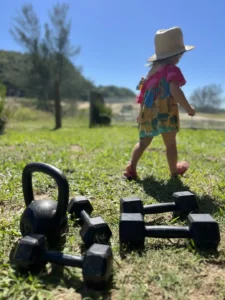Gubba, is a delightful young lady, who shared a ton of advice on Homesteading
Embracing Homesteading: A Journey to Self-Sufficiency Through Food Storage and Community
In recent years, the concept of homesteading has gained significant traction as individuals increasingly seek ways to live more sustainably and independently. Homesteading is often associated with farming and large plots of land, but at its core, it’s about much more. Homesteading is a lifestyle that emphasises self-sufficiency, community engagement, and a deep connection to nature. For many, the journey into homesteading begins with a simple, yet powerful, realisation: the need for reliable food storage.
Gubba’s journey all started with a focus on food storage, a practical step taken in response to the uncertainties that arose during the global events of 2020. Empty shelves in grocery stores served as a wake-up call, highlighting the vulnerabilities of a system many had come to rely on. The realisation that dependence on this system could lead to a lack of basic necessities sparked a desire to take control of one’s own food supply.
Homesteading is fundamentally about self-sufficiency. It involves growing your own food, preserving it, and ensuring that you can nourish yourself and your family regardless of external circumstances. This journey doesn’t necessarily begin with a large-scale farm or extensive land. In fact, for many, it starts with small, manageable steps, such as planting a modest garden or sourcing food locally.
Her initial focus was on building a food storage system, a practice inspired by the way previous generations prepared for lean times. Canning, a method used by great-grandparents, became a critical skill. The sight of canned goods lining the shelves in the cellar evoked a sense of security and self-reliance, something that the modern system of convenience often lacks.
But homesteading is not just about food storage; it’s also deeply rooted in community. As her journey progressed, she sought out local farms to source fresh, high-quality food. Eggs from a nearby farm and raw milk became staples, offering a connection to the land and the people who work it. This shift from store-bought, pasteurised products, to locally sourced, raw alternatives represented a broader awakening to the benefits of traditional, sustainable practices.
Homesteading is not limited to those with vast acres of land. The beauty of this lifestyle is its accessibility. You don’t need a sprawling farm to embrace homesteading. Even those in urban environments can take steps towards self-sufficiency by sourcing food from local farms, learning preservation techniques, and cultivating small gardens. The key is to start where you are and gradually build up your self-reliance.
Homesteading is also about fostering a sense of community. Building relationships with local farmers and other like-minded individuals creates a support network that is invaluable in times of need. This community aspect is what makes homesteading more than just a way of life—it’s a movement towards sustainability and mutual aid.
Whether it’s through food storage, gardening, or sourcing local products, each action brings you closer to self-sufficiency. It’s about reclaiming the skills and knowledge of our ancestors, ensuring that we can nourish ourselves and our families, and connecting with the land and community around us. As the world continues to change, the principles of homesteading—self-sufficiency, sustainability, and community—remain more relevant than ever.
You can watch the full YouTube clip here






